Forget hollow cheekbones and shredded calves; Is bigger going to become “better” in pro cycling?
The strapping Scandinavians on Uno-X Mobility would say yes.
Weighing in at around 80kg and 93kg respectively, Tour de France sensation Jonas Abrahamsen and Omloop’s upstart sprinter Søren Waerenskjold are oversize examples that success isn’t only found in a starvation diet.
In fact, these two towering watt-monsters reinforce a radical theory proposed by Uno-X’s visionary trainer, Olav Aleksander Bu.
“I believe all the developments in nutrition in the past five years will mean the weight of athletes is going to increase,” Bu told Velo. “And that will actually improve the watts per kilo, too.
“Fueling properly supports so many adaptions that promote and support growth,” Bu said on a recent call. “That increase in power can be far more beneficial than any ‘problem’ of extra mass.”
Sounds wild, huh?
The “more is more” mindset goes against every grumbling stomach that echoed around decades of the Tour de France, Paris-Roubaix, and Tour of Flanders.
The shift toward fueled being fast
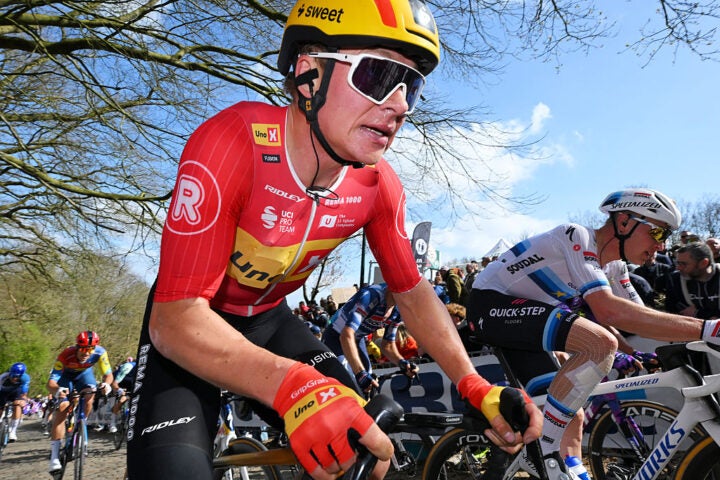
Yet the landscape has changed.
At the dining table, misery meals accompanied by a hollowed-out bread roll have been replaced by mounds of rice, rice, and probably more rice.
On the bike, riders are slurping on a sticky IV of sugary energy gels and carb drinks.
The modern “carbohydrate revolution” is seen as the biggest contributor to the wild performances of Tadej Pogačar and Mathieu van der Poel, and the collective super-speed of modern racing.
Abrahamsen has been a revelation at the Tour
The Uno-X Mobility rider has gained 20kg since 2020 to improve his cycling performance
Getty Images
______________
#TDF2024 pic.twitter.com/duS1kMjpe4— Road Code (@RoadCode) July 10, 2024
Macronutrients are now meticulously mapped to push performance and recovery into a positive upward spiral.
“It used to be the old school mindset to eat as little as possible and be starving when you got home from training,” Abrahamsen told Norwegian outlet NRK.
“I’ve become much better at getting my fuel both before and during training,” Abrahamsen said. “That way you recover better before the next session, and in addition you don’t eat twice as much right afterward.”
There are no bonks, no metabolic breakdowns, and fewer osteoporotic bone injuries in the modern peloton.
Life is better.
‘You don’t get up that hill on broccoli – it’s the sugar that gets you there’
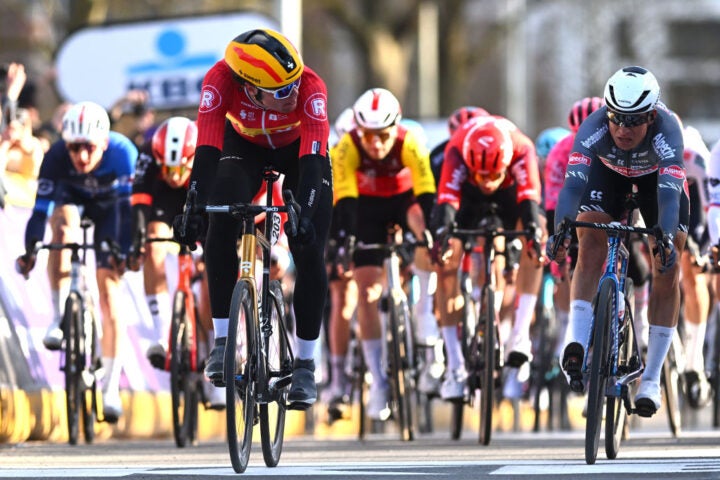
Abrahamsen’s weight gain story toured the world last season.
The enormous Norseman gained 20kg and found his best legs ever.
Waerenskjold’s weight made similar headlines this February when he stunned the favorites with his outsider victory in February at Omloop Het Hieuwsblad.
The revelation that the 195cm Norseman weighed 93.3kg on race-day became as famous as the tale of his fuzzy legs.
Waerenskjold told NRK in a shared interview with Abrahamsen that he shares his teammate’s energy-first mindset.
“For my part, I’ve never thought much about weight. I’ve eaten what I want. It’s not like I eat just any ‘green thing,’ but carbohydrates, fat, and sugar – I like that, and it gives me a lot of energy,” Waerenskjold said.
“You don’t get up that hill on broccoli – it’s the sugar that gets you there.”
Fueled is fast.
Increase kilos for an outsize impact on VO2 max?
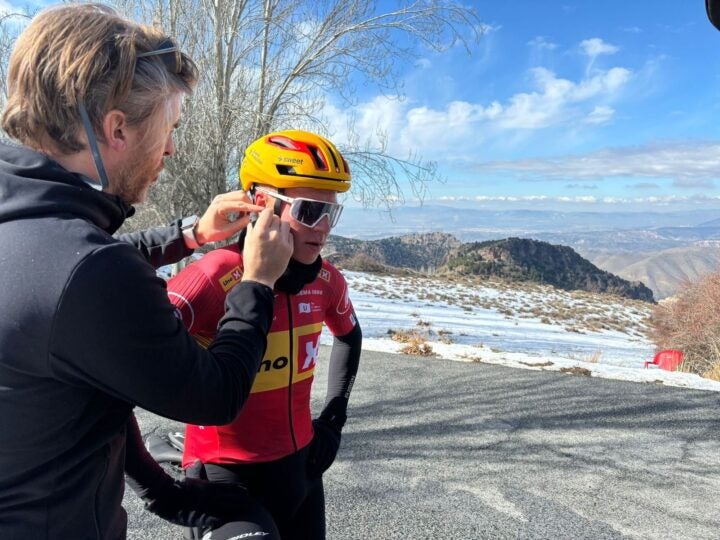
Of course, Abrahamsen and Waerenskjold are oversized outliers in a svelte pro cycling peloton. Few pros tip the scales as far as these cobble-bashing rouleurs.
But is the team’s newly installed trainer Bu onto something with his future-looking w/kg theory?
Should 60kg Jonas Vingegaard and Remco Evenepoel stock up on “gym bro” snacks and get “swoll?”
Can the trainer who took Blummenfelt and Iden to the top of world triathlon transform pro cycling?
Inside Olav Aleksander Bu’s new mission with Uno-X:https://t.co/v1X6bOFIIN
— Velo (@velovelovelo__) February 13, 2025
Bu believes there’s more to come from the modern take on fuel.
The so-called “mad professor of endurance” of physiology told Velo there’s anecdotal evidence from his work with superstar triathletes Kristian Blummenfelt and Gustav Iden that a few extra kilos provide an outsize benefit to some key physiological equations.
“We saw with Kristian and Gustav, as well as some other athletes, that if we increase weight, the Vo2 max [a key parameter of performance – ed] comes up even more,” Bu said.
“That leads to the speculation – we have not yet tested it – that increased weight will improve oxygen consumption.”
VO2 max – or “maximal oxygen uptake” – is the key reflector of fitness.
Blummenfelt is reported to have a VO2 max of more than 103 milliliters per kilogram per minute, the highest number on record.
That makes the barrel-chested triathlete a physiological Ferrari compared to even Greg LeMond, who famously commanded a VO2 max of 93ml/kg/min – the best known in pro cycling.
Outpowering breaking gravity’s pull
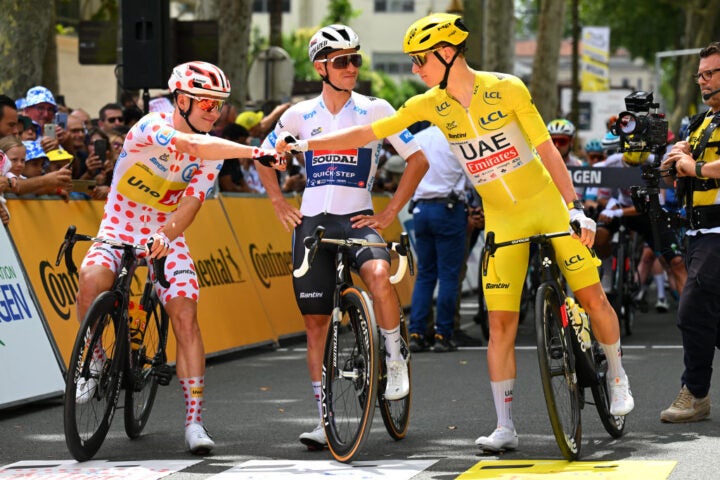
In theory, big power and big VO2 max can stretch the elastic of gravity’s inescapable pull.
“If you have two athletes that have the same watts per kilogram, but one is 80kg and one 50kg, the big guy will win every day because of their bigger output,” Bu said.
“Of course the speeds level out on a steep climb. But now that speeds on climbs are as high as 30kph, aerodynamics matter more. And then raw power – and any superiority in VO2 max – becomes more important than your watts per kilogram.”
But the band will only stretch so far.
That’s why we’ll likely never see a rider like Waerenskjold beating skinny “Jonas Vinny” to the top of an Hors Categorie climb.
Bu acknowledged there’s a tipping point where gradient and gravity will gazump raw power, and where aero gains will evaporate.
So how big is too big in pro cycling?
‘How heavy you are going to be? That’s what we need to figure out’
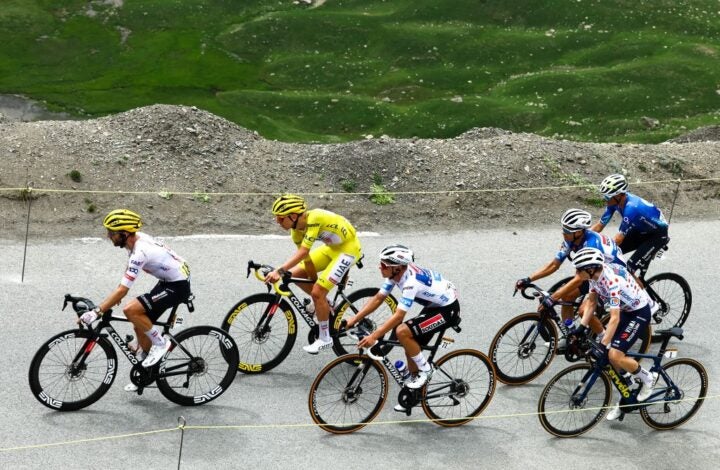
Uno-X training guru Bu is on a mission to figure out the perfect balance of weight and watts.
Yet what was possible for Bu in his intimate trainer-athlete projects with Blummenfelt and Iden won’t be so simple at Uno-X. Bu now has more than 50 male, female, and development riders on his watch.
But that won’t stop him trying.
“So the question is, just how heavy you are going to be? That is applied research. That’s what we need to figure out,” Bu told Velo. “And it’s basically individual. It’s something we’re going to look at more.
“We’re moving more and more towards individualization rather than generalization, which is where it is now.”
If Bu cracks the code, will the grand tour racers of 2034 look like barn doors compared to the 60-something kilo champions of 2024?
It’s hard to fathom it.
The modern peloton is, on average, no heavier than its mechanical-shifting predecessor. Yet somehow, lightweights like Pogačar and Vingegaard control monster power compared to the Tour de France winners of before.
I wonder what is Matteo Jorgenson’s current weight… 71-72 kg? If so, he must be the heaviest Paris-Nice winner since Tony Martin in 2011. Keep in mind that Matteo is very tall, 1.90m. #ParisNice pic.twitter.com/ZQcZgdsfqc
— Mihai Simion (@faustocoppi60) March 11, 2024
Vingegaard’s nutritionist at Visma-Lease a Bike Gabriel Martins explained how riders are musclier, stronger, and faster than their forebears – all while remaining wafer-thin.
Their monster carb consumption is offset by the massive energy demand of their historically high power numbers.
“We can monitor riders’ intakes in a much more controlled way now,” Martins told Velo. “That allows us to still have the riders lose weight while preserving their muscle mass.
“Before, weight loss was probably done through radical energy deficits without much control and less focus on strength training,” said Martins, who agreed the focus in the w/kg equation could be moving toward power rather than weight.
Can pro cycling fix its relationship with food?
Nutritionists and trainers are working to reframe the focus of the power-to-weight equation and end the era of disordered eating.
But is that enough to break the peloton’s obsession with weight?https://t.co/CcqoEGsoen
— Velo (@velovelovelo__) February 20, 2024
Fueled is fast – but bigger might not be better
The nutrition revolution has built a robust, glycogen-riddled rider that brings buckets of power to the flats – look at Roubaix contender Pogačar – and an outsized w/kg to the climbs.
Food is now seen as “fuel” rather than a bloating anchor.
But the peloton won’t become a boatload of Waerenskjold-size Viking warriors, either.
Yet who knows? Maybe Bu’s fully fueled thought experiment could push the pro cycling body mass bell-curve toward the right.
